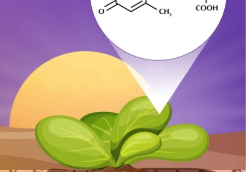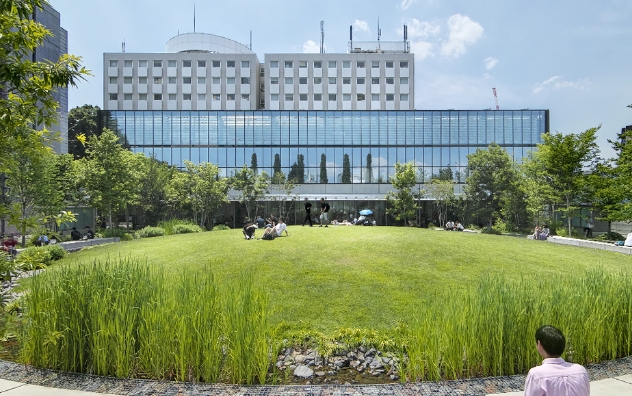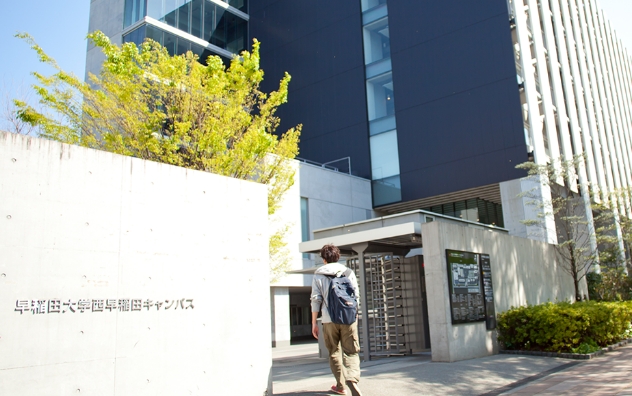How Plants Survive Drought: The Unsuspected Role of Myosin XI in Guard Cells
Mon, Jul 14, 2025-
Tags
How Plants Survive Drought: The Unsuspected Role of Myosin XI in Guard Cells
Harnessing the plant motor protein myosin XI to engineer drought-resilient crops
With climate change exacerbating drought conditions, scientists in Japan have identified a hidden player in plant survival: myosin XI. This unexpected link between the motor protein and hormone signalling that regulates water loss deepens our understanding of plant stress responses. It also opens a promising avenue for engineering drought-resilient crops. Targeting myosin XI could enhance water-use efficiency and help reshape the future of agriculture in an increasingly arid world.

Image title: Engineering Resilience: The Role of Myosin XI in Plant Drought Tolerance
Image caption: Myosin XI plays a surprising role in hormone-driven stomatal closure, helping plants conserve water during drought stress
Image credit: Professor Motoki Tominaga from Waseda University
License type: Original content
Usage restrictions: Cannot be reused without permission
With intensifying global warming and climate change, drought has become a major threat to global agriculture, impacting crop yields and food security. To survive such adverse events, plants have evolved several strategies. One such strategy to counteract water scarcity is ‘stomatal closure,’ where stomata—the tiny pores on leaf surfaces responsible for gaseous exchange—close to limit water loss. This process is regulated by the plant hormone abscisic acid (ABA), which plays a crucial role in the plant’s internal stress-response mechanisms.
While the role of ABA in drought response is well-established, researchers have now identified a surprising contributor to this process: myosin XI, a motor protein traditionally known for transporting cellular components. To explore this, a team of researchers led by Professor Motoki Tominaga from Waseda University, Japan, conducted a study to determine whether myosin XI actively contributes to drought response in plants and to uncover the processes involved. “Although previous studies have suggested a potential involvement of myosin XI in drought stress responses, the underlying mechanisms have remained unclear,” shares Tominaga. The findings of this research were published in Volume 44 of Plant Cell Reports on June 19, 2025. The study was co-authored by Graduate Student Haiyang Liu, also from Waseda University.
Researchers used Arabidopsis thaliana as a model to investigate the role of myosin XI in drought response. They used genetically modified plants lacking one, two (2ko), or all three (3ko), major myosin XI genes. These were then compared to wild-type plants across several tests, including drought survival assays, water loss measurements, stomatal aperture analysis, and ABA sensitivity. They also measured reactive oxygen species (ROS) production, visualized microtubules with fluorescent markers, and tracked expression of ABA-responsive genes via qRT-PCR. This comprehensive approach allowed them to assess the functional contribution of myosin XI to drought tolerance and ABA signaling in plants.
The results were striking. Plants lacking myosin XI, especially the 2ko and 3ko mutants, showed a higher rate of water loss, impaired stomatal closure, and lower survival under drought. They were also less responsive to ABA, as seen in higher germination rates and reduced inhibition of root growth under hormone treatment. At the cellular level, these mutants exhibited reduced ROS production as well as disrupted microtubule remodeling, both of which are essential for ABA-induced stomatal closure. Key stress-related genes also showed decreased expression, indicating that myosin XI plays a regulatory role in ABA signaling.
These findings reveal that myosin XI is not just a transport protein, but it actively supports plant drought defense by coordinating ROS signaling, microtubule remodeling, and gene activation in guard cells. This enables plants to close stomata more effectively and conserve water. “It was found that in multiple mutants of plant myosin XI, the rate of water loss during drought is four times faster than in the wild type,” notes Tominaga. “This finding offers a new perspective on how plants adapt to environmental changes.”
This study presents several important breakthroughs and paves the way for new research directions. It reveals a previously unrecognized role of myosin XI in the plant abiotic stress response, offering deeper insight into how intracellular transport systems aid environmental adaptation. Additionally, it identifies a promising molecular target for enhancing drought resistance in crops.
“This discovery is expected to advance fundamental research on how plants respond to stress and contribute to the development of technologies that improve water-use efficiency in crops grown in drought-prone regions,” shares Tominaga. “We aim to further advance our research so that this knowledge can be applied to agricultural technologies that support farming in the face of climate change,” he adds.
In summary, this study uncovers myosin XI as a critical player in the plant drought response, linking cellular transport machinery to hormone signaling. As climate pressures grow, insights like these offer promising paths toward developing resilient, water-efficient crops for a changing world.
Reference
Title of original paper: Myosin XI coordinates ABA‑induced stomatal closure via microtubule stability and ROS synthesis in drought‑stressed Arabidopsis
DOI:10.1007/s00299-025-03538-2
Journal: Plant Cell Reports
Article Publication Date: 19 June, 2025
Authors: Haiyang Liu1 and Motoki Tominaga1,2
Affiliation:
1Graduate School of Science and Engineering, Waseda University
2Faculty of Education and Integrated Arts and Sciences, Waseda University
About Professor Motoki Tominaga from Waseda University
Motoki Tominaga is a Professor at the Faculty of Education and Integrated Arts and Sciences, School of Education, Waseda University. He completed his PhD in 2000 at the Himeji Institute of Technology. Subsequently, he worked at the National Institute of Information and Communications Technology, RIKEN, and the Japan Science and Technology PRESTO program. He joined Waseda University in 2014 as an Assistant Professor and has, since then, risen through the ranks to become a Professor. An expert in actomyosin dynamics, he is known for his work on motor protein regulation and its applications in improving plant growth and productivity.














